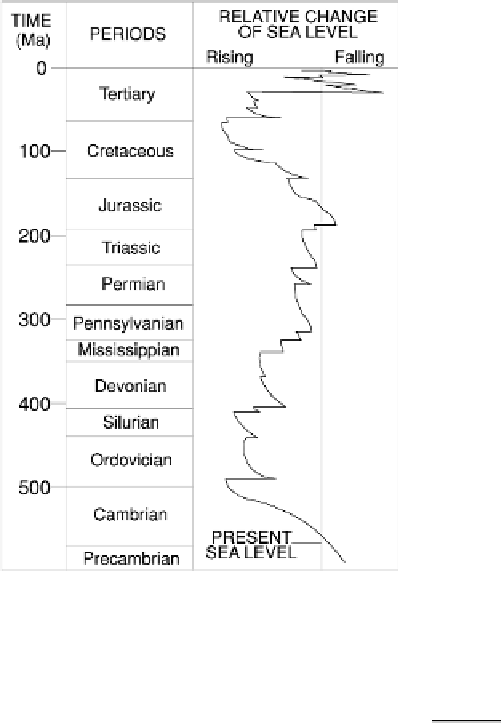Geoscience Reference
In-Depth Information
Figure 10.32.
Changes in
sea level during the
Phanerozoic. (After Vail
and Mitchum (1978),
reprinted by permission.)
Phanerozoic sea level. To take account of this variation when we backstrip sub-
sidence data, we must further modify Eq. (10.3)to
d
s
ρ
m
−
ρ
s
ρ
m
−
ρ
w
h
SL
ρ
m
ρ
m
−
ρ
w
d
w
=
h
w
+
−
(10.4)
where
h
SL
is the change in sea level as shown in Fig. 10.32.Inany detailed
study of a region, another factor that should be taken into account is the
postdepositional compaction of sediments. As more sediments are deposited,
pore water is expelled and the thickness of each sedimentary layer reduced. In
Eqs. (10.1)-(10.4),
d
s
represents the thickness of sediments when they were laid
down and
ρ
s
their saturated density, not the thickness and density measured
in situ
today.
Decompaction
is the process of calculating the original sediment
thickness.
Equations (10.1)-(10.4) assume Airy-type local compensation. However, if
compensation is achieved not locally but regionally, the loading effect of the
sediments should be calculated by considering the flexural loading of a thin
elastic or viscoelastic plate. This is much more complex mathematically. In such
models, because the load of the sediments is spread over a broad area, the net
result is that the amplification factor is somewhat reduced.

